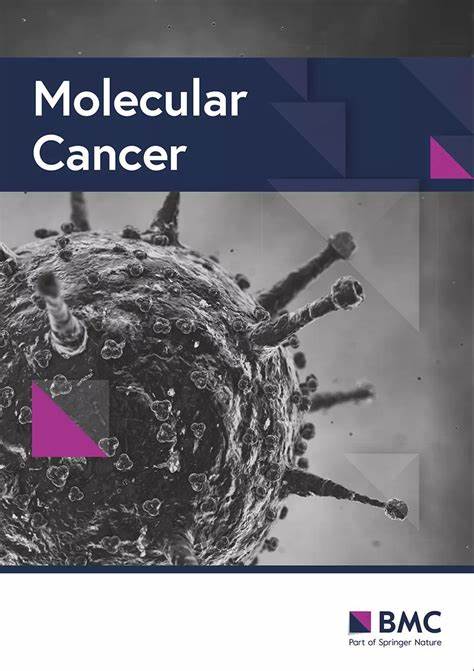Multimodal lung cancer theranostics via manganese phosphate/quercetin particle
IF 27.7
1区 医学
Q1 BIOCHEMISTRY & MOLECULAR BIOLOGY
引用次数: 0
Abstract
The diagnosis and treatment of non-small cell lung cancer in clinical settings face serious challenges, particularly due to the lack of integration between the two processes, which limit real-time adjustments in treatment plans based on the patient’s condition and drive-up treatment costs. Here, we present a multifunctional pH-sensitive core-shell nanoparticle containing quercetin (QCT), termed AHA@MnP/QCT NPs, designed for the simultaneous diagnosis and treatment of non-small cell lung cancer. Mechanistic studies indicated that QCT and Mn2+ exhibited excellent peroxidase-like (POD-like) activity, catalysing the conversion of endogenous hydrogen peroxide into highly toxic hydroxyl radicals through a Fenton-like reaction, depleting glutathione (GSH), promoting reactive oxygen species (ROS) generation in mitochondria and endoplasmic reticulum, and inducing ferroptosis. Additionally, Mn2+ could activate the cGAS-STING signalling pathway and promote the maturation of dendritic cells and infiltration of activated T cells, thus inducing tumor immunogenic cell death (ICD). Furthermore, it exhibited effective T2-weighted MRI enhancement for tumor imaging, making them valuable for clinical diagnosis. In vitro and in vivo experiments demonstrated that AHA@MnP/QCT NPs enabled non-invasive imaging and tumor treatment, which presented a one-stone-for-two-birds strategy for combining tumor diagnosis and treatment, with broad potential for clinical application in non-small cell lung cancer therapy.磷酸锰/槲皮素颗粒对肺癌多模式治疗的影响
非小细胞肺癌的诊断和治疗在临床环境中面临着严峻的挑战,特别是由于两者之间缺乏整合,这限制了根据患者病情实时调整治疗计划,并推高了治疗成本。在这里,我们提出了一种含有槲皮素(QCT)的多功能ph敏感核壳纳米颗粒,称为AHA@MnP/QCT NPs,旨在同时诊断和治疗非小细胞肺癌。机制研究表明,QCT和Mn2+表现出优异的过氧化物酶样(pod样)活性,通过芬顿样反应催化内源性过氧化氢转化为高毒性羟基自由基,消耗谷胱甘肽(GSH),促进线粒体和内质网活性氧(ROS)的产生,诱导铁死亡。此外,Mn2+可以激活cGAS-STING信号通路,促进树突状细胞成熟和活化T细胞浸润,从而诱导肿瘤免疫原性细胞死亡(ICD)。此外,它表现出有效的t2加权MRI肿瘤成像增强,使其对临床诊断有价值。体外和体内实验表明,AHA@MnP/QCT NPs可实现无创成像和肿瘤治疗,为肿瘤诊疗提供了一石二鸟的策略,在非小细胞肺癌治疗中具有广阔的临床应用潜力。
本文章由计算机程序翻译,如有差异,请以英文原文为准。
求助全文
约1分钟内获得全文
求助全文
来源期刊

Molecular Cancer
医学-生化与分子生物学
CiteScore
54.90
自引率
2.70%
发文量
224
审稿时长
2 months
期刊介绍:
Molecular Cancer is a platform that encourages the exchange of ideas and discoveries in the field of cancer research, particularly focusing on the molecular aspects. Our goal is to facilitate discussions and provide insights into various areas of cancer and related biomedical science. We welcome articles from basic, translational, and clinical research that contribute to the advancement of understanding, prevention, diagnosis, and treatment of cancer.
The scope of topics covered in Molecular Cancer is diverse and inclusive. These include, but are not limited to, cell and tumor biology, angiogenesis, utilizing animal models, understanding metastasis, exploring cancer antigens and the immune response, investigating cellular signaling and molecular biology, examining epidemiology, genetic and molecular profiling of cancer, identifying molecular targets, studying cancer stem cells, exploring DNA damage and repair mechanisms, analyzing cell cycle regulation, investigating apoptosis, exploring molecular virology, and evaluating vaccine and antibody-based cancer therapies.
Molecular Cancer serves as an important platform for sharing exciting discoveries in cancer-related research. It offers an unparalleled opportunity to communicate information to both specialists and the general public. The online presence of Molecular Cancer enables immediate publication of accepted articles and facilitates the presentation of large datasets and supplementary information. This ensures that new research is efficiently and rapidly disseminated to the scientific community.
 求助内容:
求助内容: 应助结果提醒方式:
应助结果提醒方式:


